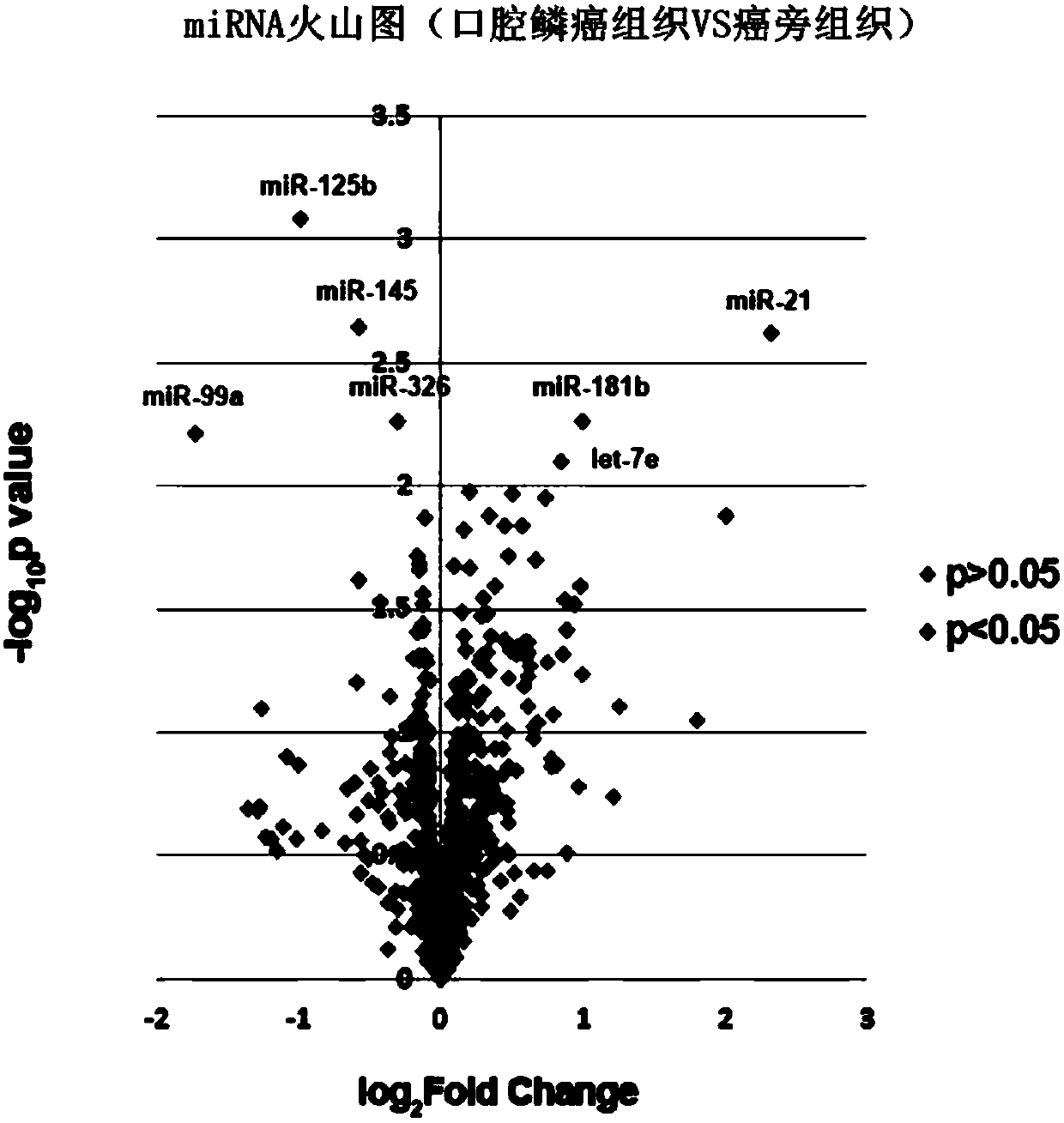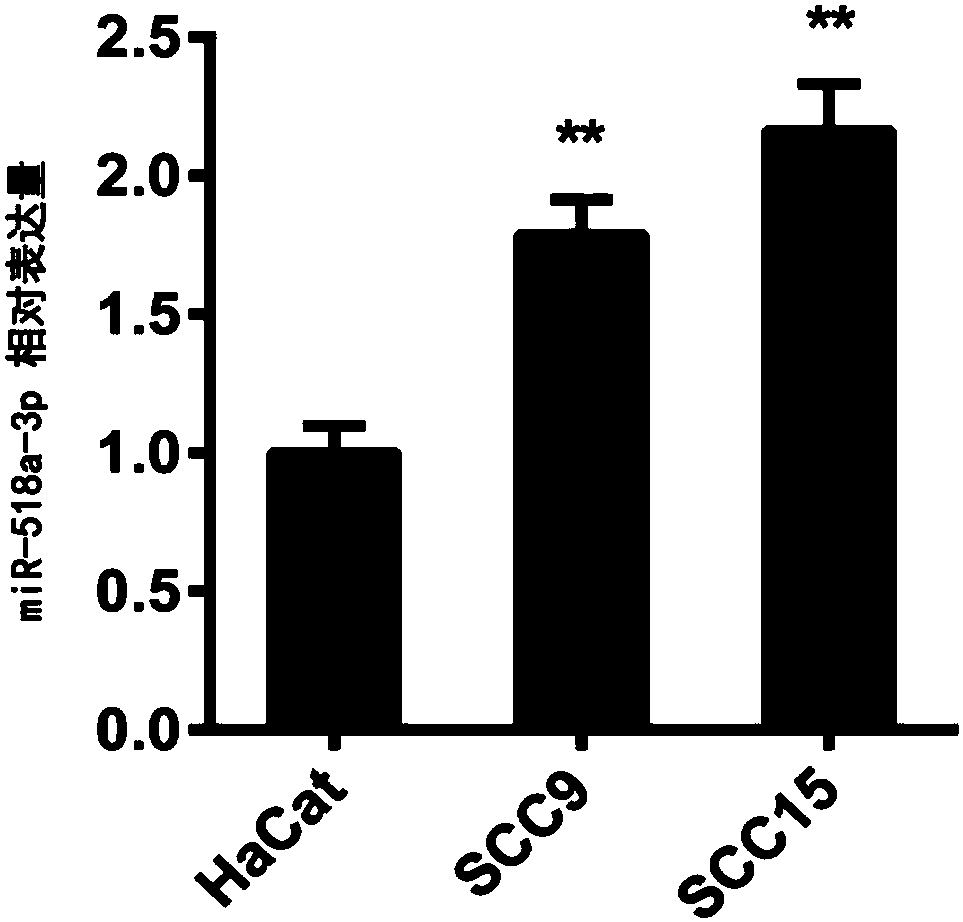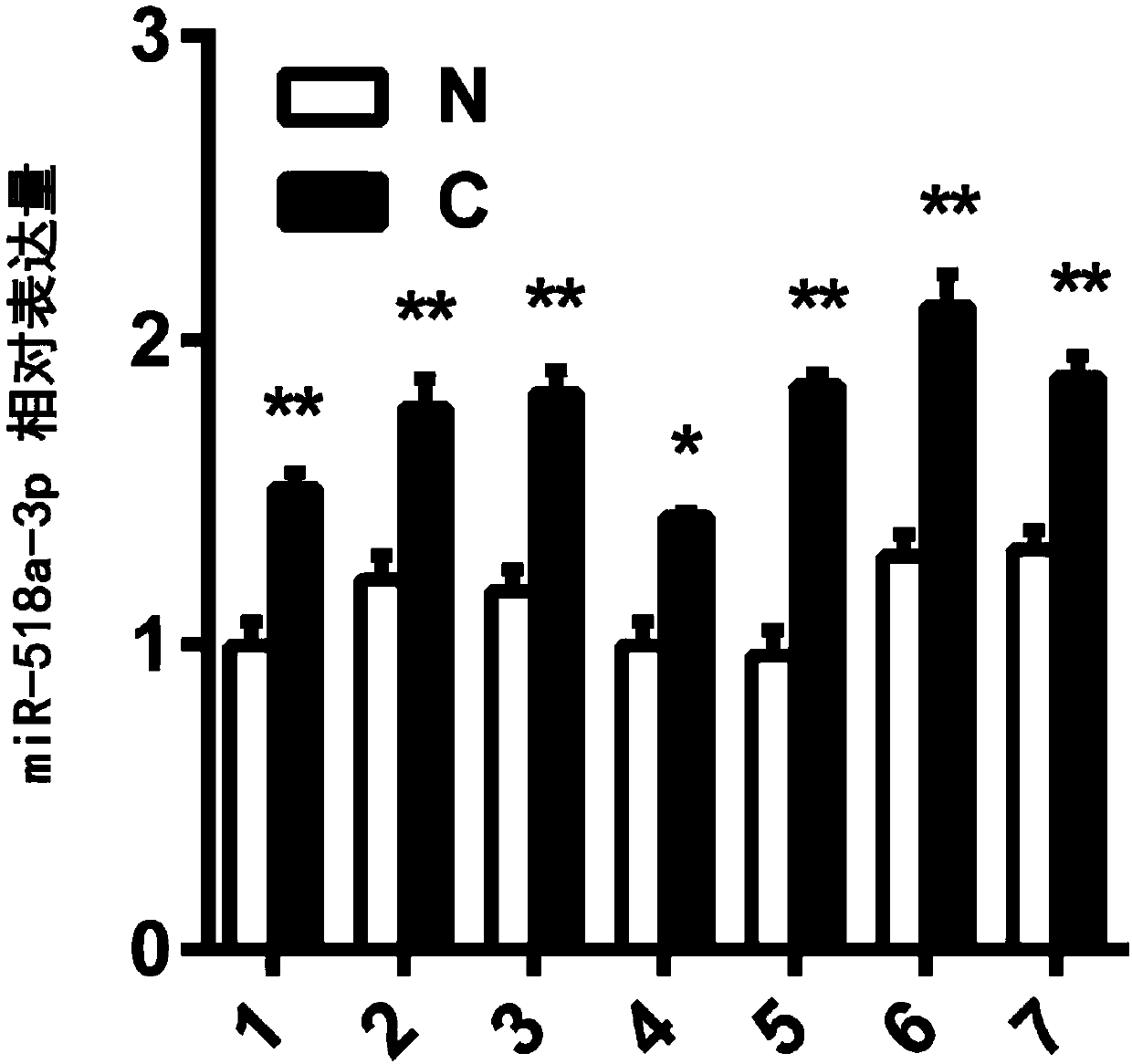Application of miR-518a-3p in diagnosis of oral carcinoma
A mir-518a-3p, oral cancer technology, applied in medical preparations containing active ingredients, determination/inspection of microorganisms, DNA/RNA fragments, etc. The family survival status and quality of life decline of patients with squamous cell carcinoma
- Summary
- Abstract
- Description
- Claims
- Application Information
AI Technical Summary
Problems solved by technology
Method used
Image
Examples
Embodiment 1
[0049] Example 1 Sample collection, sequencing and data analysis
[0050] The samples of the 6 cases of oral squamous cell carcinoma tissues and their adjacent normal tissues were all surgically resected specimens in the hospital, and all the specimens were placed in a liquid nitrogen tank within 10 minutes of isolation, and then transferred to a -80°C refrigerator for storage. Sent to the company for analysis of miRNA chip data, and screened out miRNAs with significant differential expression. By performing log2 processing on the Ford Change value of miRNA, and performing -log10 processing on the corresponding p value, a volcano map is drawn (see figure 1 ). In the analysis results, there were 55 miRNAs with p<0.05, among which 38 were up-regulated and 17 were down-regulated. In addition to several miRNAs that have been reported in the literature and are closely related to oral squamous cell carcinoma (such as miR-125b, miR-145, miR-21, miR-181b, miR-362-3p, miR-99a, let-7e...
Embodiment 2
[0051] Example 2 Cell Culture
[0052] The human oral squamous cell carcinoma cell lines UM1 and UM2 used in the experiment were donated by Guanghua School of Stomatology, Sun Yat-sen University. The human oral squamous cell carcinoma cell lines SCC9 and SCC15 were purchased from ATCC (American Type Culture Collection). The cell lines CAL27 and Tca8113 were donated by the Cancer Research Institute of the Affiliated Cancer Hospital of Guangzhou Medical University. The above cells were used with 10% fetal bovine serum, 1×10 5 U / L penicillin and 1×10 5 Cultured in U / L streptomycin DMEM / F12 (1:1) complete medium at 37°C, 5% CO 2 and cultured under saturated humidity conditions, subcultured once every 2-3 days, and the cells in the exponential growth phase were used for experiments. HaCat is human normal epidermal cells purchased from the Institute of Basic Medical Sciences, Chinese Academy of Sciences, cells containing 10% fetal bovine serum, 1 × 10 5 U / L penicillin and 1×10 5...
Embodiment 3
[0061] The extraction of embodiment 3miRNA
[0062] 3.1 Extraction of tissue miRNA
[0063] The miRNAs extraction process was carried out according to the instructions of The RNeasy Plus Mini Kit (QIAGEN, Germany). Specific steps are as follows:
[0064] 1) Wash the mortar and grinding rods under running water, air-dry them, wrap them in tin foil, and place them in a high-temperature oven at 180°C for 12 hours to inactivate the enzymes. After taking it out, cool it at room temperature, pour a small amount of liquid nitrogen into the mortar to keep the temperature of the mortar below 4°C. Put the frozen tissue fragments into a mortar, add liquid nitrogen to make the tissue brittle, grind it with a grinding rod, grind it repeatedly to crush the tissue, and transfer the powdered tissue to a dry Ep tube.
[0065] 2) Add 70 μl QIA20l Lysis Reagent to the Ep tube, pipette, mix for 1 min, and place at room temperature for 5 min.
[0066]3) Add 140 μl of chloroform, seal, shake fo...
PUM
 Login to View More
Login to View More Abstract
Description
Claims
Application Information
 Login to View More
Login to View More - R&D
- Intellectual Property
- Life Sciences
- Materials
- Tech Scout
- Unparalleled Data Quality
- Higher Quality Content
- 60% Fewer Hallucinations
Browse by: Latest US Patents, China's latest patents, Technical Efficacy Thesaurus, Application Domain, Technology Topic, Popular Technical Reports.
© 2025 PatSnap. All rights reserved.Legal|Privacy policy|Modern Slavery Act Transparency Statement|Sitemap|About US| Contact US: help@patsnap.com



